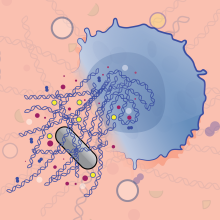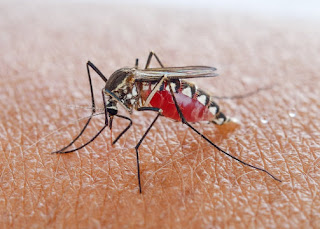Laboratory-evolved bacteria switch to consuming carbon dioxide for growth
The point was to make an advantageous logical stage that could improve CO2 obsession, which can help address moves identified with maintainable creation of nourishment and powers and an Earth-wide temperature boost brought about by CO2 discharges," says senior creator Ron Milo, at frameworks researcher at the Weizmann Institute of Science. "Changing over the carbon wellspring of E. coli, the workhorse of biotechnology, from natural carbon into CO2 is a significant advance towards building up such a stage."
The living scene is partitioned into autotrophs that convert inorganic CO2 into biomass and heterotrophs that expend natural mixes. Autotrophic living beings command the biomass on Earth and supply a lot of our nourishment and powers. A superior comprehension of the standards of autotrophic development and strategies to upgrade it is basic for the way to maintainability.
An excellent test in manufactured science has been to produce engineered autotrophy inside a model heterotrophic life form. In spite of broad enthusiasm for sustainable power source stockpiling and increasingly economical nourishment creation, past endeavors to design modernly significant heterotrophic model life forms to utilize CO2 as the sole carbon source have fizzled. Past endeavors to set up autocatalytic CO2 obsession cycles in model heterotrophs constantly required the expansion of multi-carbon natural mixes to accomplish stable development.
"From an essential logical point of view, we needed to check whether such a significant change in the eating routine of microbes - from reliance on sugar to the blend of all their biomass from CO2 - is potential," says first creator Shmuel Gleizer (@GleizerShmuel), a Weizmann Institute of Science postdoctoral individual. "Past testing the attainability of such a change in the lab, we needed to know how extraordinary an adjustment is required regarding the progressions to the bacterial DNA outline."
In the Cell study, the analysts utilized metabolic reworking and lab advancement to change over E. coli into autotrophs. The designed strain harvests vitality from formate, which can be created electrochemically from sustainable sources. Since formate is a natural one-carbon intensify that doesn't fill in as a carbon hotspot for E. coli development, it doesn't bolster heterotrophic pathways. The specialists additionally built the strain to deliver non-local proteins for carbon obsession and decrease and for reaping vitality from formate. In any case, these progressions alone were insufficient to help autotrophy in light of the fact that E. coli's digestion is adjusted to heterotrophic development.
To defeat this test, the scientists went to versatile research facility development as a metabolic improvement apparatus. They inactivated focal proteins associated with heterotrophic development, rendering the microscopic organisms progressively subject to autotrophic pathways for development. They additionally developed the cells in chemostats with a restricted stockpile of the sugar xylose - a wellspring of natural carbon - to restrain heterotrophic pathways. The underlying stock of xylose for roughly 300 days was important to help enough cell multiplication to kick start development. The chemostat additionally contained a lot of formate and a 10% CO2 climate.
In this condition, there is a huge specific bit of leeway for autotrophs that produce biomass from CO2 as the sole carbon source contrasted and heterotrophs that rely upon xylose as a carbon hotspot for development. Utilizing isotopic naming, the specialists affirmed that the developed detached microscopic organisms were genuinely autotrophic, i.e., CO2 and not xylose or some other natural compound upheld cell development.
"All together for the general methodology of lab development to succeed, we needed to figure out how to couple the ideal change in cell conduct to a wellness advantage," Milo says. "That was extreme and required a great deal of reasoning and shrewd structure."
By sequencing the genome and plasmids of the developed autotrophic cells, the analysts found that as not many as 11 changes were obtained through the developmental procedure in the chemostat. One lot of changes influenced qualities encoding proteins connected to the carbon obsession cycle. The subsequent classification comprised of transformations saw in qualities generally saw as changed in past versatile research facility advancement tests, recommending that they are not really explicit to autotrophic pathways. The third classification comprised of transformations in qualities with no known job.
The living scene is partitioned into autotrophs that convert inorganic CO2 into biomass and heterotrophs that expend natural mixes. Autotrophic living beings command the biomass on Earth and supply a lot of our nourishment and powers. A superior comprehension of the standards of autotrophic development and strategies to upgrade it is basic for the way to maintainability.
An excellent test in manufactured science has been to produce engineered autotrophy inside a model heterotrophic life form. In spite of broad enthusiasm for sustainable power source stockpiling and increasingly economical nourishment creation, past endeavors to design modernly significant heterotrophic model life forms to utilize CO2 as the sole carbon source have fizzled. Past endeavors to set up autocatalytic CO2 obsession cycles in model heterotrophs constantly required the expansion of multi-carbon natural mixes to accomplish stable development.
"From an essential logical point of view, we needed to check whether such a significant change in the eating routine of microbes - from reliance on sugar to the blend of all their biomass from CO2 - is potential," says first creator Shmuel Gleizer (@GleizerShmuel), a Weizmann Institute of Science postdoctoral individual. "Past testing the attainability of such a change in the lab, we needed to know how extraordinary an adjustment is required regarding the progressions to the bacterial DNA outline."
In the Cell study, the analysts utilized metabolic reworking and lab advancement to change over E. coli into autotrophs. The designed strain harvests vitality from formate, which can be created electrochemically from sustainable sources. Since formate is a natural one-carbon intensify that doesn't fill in as a carbon hotspot for E. coli development, it doesn't bolster heterotrophic pathways. The specialists additionally built the strain to deliver non-local proteins for carbon obsession and decrease and for reaping vitality from formate. In any case, these progressions alone were insufficient to help autotrophy in light of the fact that E. coli's digestion is adjusted to heterotrophic development.
To defeat this test, the scientists went to versatile research facility development as a metabolic improvement apparatus. They inactivated focal proteins associated with heterotrophic development, rendering the microscopic organisms progressively subject to autotrophic pathways for development. They additionally developed the cells in chemostats with a restricted stockpile of the sugar xylose - a wellspring of natural carbon - to restrain heterotrophic pathways. The underlying stock of xylose for roughly 300 days was important to help enough cell multiplication to kick start development. The chemostat additionally contained a lot of formate and a 10% CO2 climate.
In this condition, there is a huge specific bit of leeway for autotrophs that produce biomass from CO2 as the sole carbon source contrasted and heterotrophs that rely upon xylose as a carbon hotspot for development. Utilizing isotopic naming, the specialists affirmed that the developed detached microscopic organisms were genuinely autotrophic, i.e., CO2 and not xylose or some other natural compound upheld cell development.
"All together for the general methodology of lab development to succeed, we needed to figure out how to couple the ideal change in cell conduct to a wellness advantage," Milo says. "That was extreme and required a great deal of reasoning and shrewd structure."
By sequencing the genome and plasmids of the developed autotrophic cells, the analysts found that as not many as 11 changes were obtained through the developmental procedure in the chemostat. One lot of changes influenced qualities encoding proteins connected to the carbon obsession cycle. The subsequent classification comprised of transformations saw in qualities generally saw as changed in past versatile research facility advancement tests, recommending that they are not really explicit to autotrophic pathways. The third classification comprised of transformations in qualities with no known job.
Email us at: clinicalmicrobiology@pulsusgathering.com



Comments
Post a Comment